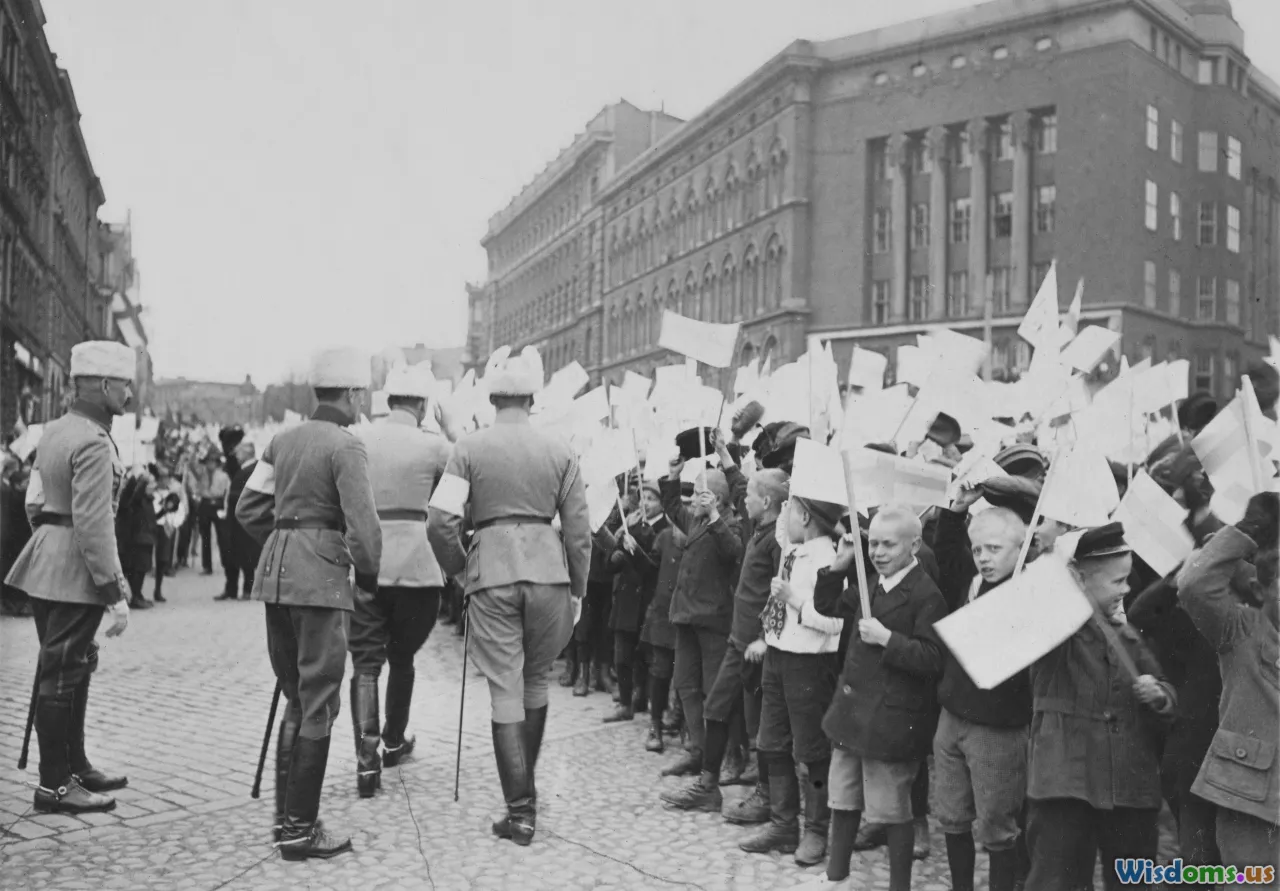
Can Local Activism Spark National Social Change?
16 min read Explore how local activism can ignite national movements and drive significant social change across broader societies. (0 Reviews)
Can Local Activism Spark National Social Change?
From grassroots marches in small towns to bold neighborhood initiatives, history teaches us that local activism often sows the seeds of sweeping national transformation. While it may seem that substantial change must originate in the halls of power, the lived experiences, ingenuity, and determination of everyday people have shaped the trajectory of social movements for generations. But how, exactly, can local efforts ripple out and fundamentally alter society as a whole?
The Power of Grassroots Foundations

Local activism is rooted in proximity: a direct connection between people, their immediate environment, and the issues they confront daily. This proximity means that local activists often identify problems and solutions before national attention gravitates their way. The anti-segregation sit-ins of the American Civil Rights Movement, for instance, began with just a handful of students sitting at a lunch counter in Greensboro, North Carolina, in 1960. Their actions, while local, embodied the prevailing injustice and lit a fire that soon engulfed the entire country.
Such foundations rest on a few key strengths:
- Authenticity: Local activists speak from experience, lending legitimacy that national figures may lack.
- Accessibility: Decision-makers and community members are often closely-knit, making dialogue and rapid mobilization possible.
- Impactful Storytelling: Narratives that originate locally are often more compelling, relatable, and easy to broadcast, especially through today's decentralized media platforms.
Beyond civil rights, take Flint, Michigan. Residents' discovery—then exposure—of unsafe water in Flint showcases how persistent local advocacy can capture both media attention and pressure federal agencies for urgent oversight and intervention. Their tenacity reshaped national conversations about water safety and government accountability.
Mechanisms: How Local Activism Scales Up

The migration from local action to national change relies upon a variety of interconnected mechanisms.
1. Networks and Alliances
Local activists don’t operate in isolation. Social media enables local stories to be broadcast instantly, connecting activists across geographies and interest groups. The #MeToo movement, originating with Tarana Burke’s efforts in local communities, went global thanks to digital networking. Grassroots organizations frequently form alliances that allow for resource sharing, unified messaging, and synchronized mass mobilization.
2. Legislative and Policy Leverage
Often, local success stories serve as test cases or models for federal legislation. Nine states and Washington, D.C. had established paid family leave laws before the debate reached the U.S. Congress. By demonstrating effectiveness at the local level, activists can showcase that broader adoption is both viable and beneficial, allaying concerns over feasibility or resistance to change.
3. Media Spotlight and Narrative Shaping
Local movements regularly harness viral moments to capture the national imagination. The shooting of Michael Brown in Ferguson, Missouri in 2014 became a turning point due to persistent, organized local protests. This steady activism, combined with footage and reportage shared broadly, funneled themes of police accountability and racism into public consciousness. National debates on policing reform owe much of their momentum to such local galvanization.
Lessons From History: Local Movements That Transformed Nations

A compelling examination of social change reveals recurring patterns: grassroots action, organization, adaptation, and persistence. Here are tangible examples:
Women's Suffrage in the United States
In the late 19th century, suffrage activism was largely localized, with Massachusetts, New York, and Kentucky leading pilots for women’s voting rights. The tactics, rhetoric, and resilience developed at these levels empowered national organizations like the National American Woman Suffrage Association, which in turn orchestrated the broad campaign culminating in the 19th Amendment.
LGBTQ+ Rights and Stonewall
The 1969 Stonewall riots, rooted in a single Greenwich Village bar, ignited national and global efforts for gay rights. Local organizing around Stonewall anniversaries—the birth of Pride marches—became a touchstone for political action and normalization in the wider cultural landscape. Fast-forward to 2015, when longstanding local and state fights for marriage equality paved the way for the landmark Supreme Court decision in Obergefell v. Hodges.
India's Independence Movement
Before Gandhi led nationwide protests, he tested civil resistance techniques in smaller cities like Champaran and Kheda. These early victories built skills and networks that crescendoed into the Salt March and Quit India movement—local actions on a grand stage that reshaped the nation's destiny.
Each of these underscores a simple truth: great tides often begin as ripples in small ponds.
Analysis: Advantages and Limitations of Local Activism

Local activism’s advantages are clear: a creative and rapid response to immediate issues, tight community bonds, and the flexibility to pilot experimental initiatives. But can every local movement expect to trigger national transformation? Not necessarily—here’s why:
Advantages
- Direct Engagement: Solutions often better reflect local context and real needs.
- Visibility: Highly visceral incidents or punchy stories occasion wider media coverage.
- Resource Efficiency: Low overhead, strong volunteer culture, and streamlined operations.
Limitations
- Resource Constraints: Local groups often lack funding and access to major media channels.
- Political Barriers: Local authorities may be intransigent or even hostile, stymieing progress.
- Risk of Isolation: Not every geographically-limited issue has clear national resonance.
In response, sustainable change frequently requires local activism to collaborate with state or national organizations for greater scale and endurance.
Case Study: How Environmental Justice Grew From Local Roots

The environmental justice movement demonstrates the intricate interplay of local roots and national reach.
Warren County, North Carolina
In 1982, the predominantly Black community of Warren County protested the siting of a hazardous PCB landfill. Despite heavy police reaction, the sustained civil disobedience inspired scholars and policy makers to recognize the pattern of environmental racism in the U.S. Public hearings and partnerships with allies led to the Environmental Protection Agency acknowledging injustices, establishing the Office of Environmental Justice in 1992.
Over time, localized data, legal challenges, and storytelling seeded a network of community-based groups. Their shared tactics—from mapping to citizen science—were adopted around the country, resulting in federal acknowledgment, new regulations, and funding mechanisms for local remediation.
Turning Points: What Enables Local to Become National?

Studying successful transitions from local to national activism reveals critical catalysts:
- Crystallizing Events: Dramatic, easily communicable events (e.g., Rosa Parks’ arrest in Montgomery) galvanize awareness.
- Compelling Messengers: Charismatic local leaders or powerful narratives invite continual coverage.
- Replication Tools: Tactics easy to adopt elsewhere (public sit-ins, boycotts, marches) lower barriers to scale.
- Legitimacy Through Early Win: Initial, widely-publicized victories boost morale, attract attention, and encourage others to join in locally and nationally.
Importantly, learning from failures is essential; some movements falter due to insufficient national resonance, discrimination, or powerful counter-movements. Crafting campaigns that resonate widely while staying grounded in local struggles increases odds of broader success.
How-To: Amplifying Local Actions For National Impact

For activists eager to scale their initiatives beyond their community’s borders, strategic planning is crucial. Here are actionable tactics for maximizing influence:
1. Document and Share Relatable Stories
Every movement needs a face and a story. Develop multimedia assets—testimonials, before-and-after visual documentation, mini-documentaries—to humanize statistics. Leverage platforms like TikTok, Instagram, or Twitter that value authentic content.
2. Connect and Collaborate Across Borders
Reach out to counterparts in other regions. Formerties among LGBTQ+ youth alliances, for instance, enabled template-based organizing at schools nationwide—replicated and adapted to different contexts.
3. Tailor Approaches for Local and National Audiences
When seeking national attention, frame your issue as both unique and emblematic of a larger pattern. Translate specialized concerns into universal themes, such as justice or security. For example, farmworker rights campaigns often highlight both their distinctive context and implications for food safety nationwide.
4. Engage the Media Effectively
Train spokespersons, issue press releases, and maintain open communication lines with reporters and influencers at various levels. Embrace opportunities for interviews, op-eds, and podcast discussions. Don’t neglect community newspapers and hyper-local outlets—they’re still crucial bridges to larger stages.
5. Pursue Advocacy and Legal Redress Simultaneously
Legislation lags behind lived realities but is often crucial for lasting impact. Assemble coalitions willing to pursue both court cases and legislative campaigns, leveraging diverse expertise for a holistic approach.
Modern Technologies and the Acceleration of Change

Since the dawn of the Internet, local activism has leaped into warp speed. Smart technologies not only enable message amplification; they redefine who can lead movements and how quickly national—or global—action can erupt.
- Social media: Protest hashtags (#BlackLivesMatter, #FridaysForFuture) spawn instant transnational alliances, global days of action, and fast-twitch advocacy.
- Crowdsourcing platforms: Small communities fundraise rapidly or mount legal fights via digital means (e.g., GoFundMe campaigns for disaster-affected neighborhoods).
- Live streaming: On-the-ground documentation, such as Darnella Frazier’s filming of George Floyd’s murder, bypasses traditional media, making every bystander a potential documentarian.
- Blockchain: Used for transparency in fundraising, anti-corruption initiatives, or even democratic local decision-making (see participatory budgeting experiments in Barcelona, Spain).
Technology equips marginalized groups with voice and agency—erasing siloed boundaries between the local and the national for the first time in history.
From Small Wins to Systemic Change: The Ripple Effect in Practice

Imagine small communities demanding recycling programs or clean air ordinances. Over time, those policies influence regional habits, draw the gaze of regulators, and—through a domino sequence—may result in federal environmental protection laws. Each "small win" builds competence, attracts resources, and initiates a cultural shift that can realign national discussions on sustainability, labor rights, or digital privacy.
A landmark example is the movement for minimum wage increases. "Fight for $15" started with just a few hundred fast-food workers striking in New York City in 2012. Years of local advocacy, coalition-building, city-level and then state-level wins raised the national profile, until presidential campaigns debated a federal $15 minimum wage. This pathway—local piloting, storytelling, multi-jurisdiction marches—proves not only that social change can move from the ground up, but that it often must.
Building Momentum for the Future

The reality is that while the trajectory from local activism to national change is marked by obstacles and setbacks, it remains arguably the most reliable engine of democratic renewal. As issues become more complex and intersect—climate, racial justice, health equity—the role of the locally-informed changemaker reasserts itself.
In an age rife with uncertainty, the best hope for meaningful, sustained improvement may lie in the ability of communities to organize, innovate, and elevate stories that reflect the diversity and urgency of everyday lives. Whether advocating for bread-and-butter concerns or bending history’s arc, the spark of national change nearly always enters at street level—where the voices, dreams, and resilience of local activists challenge the status quo and demand, at last, a better tomorrow.
Rate the Post
User Reviews
Popular Posts















